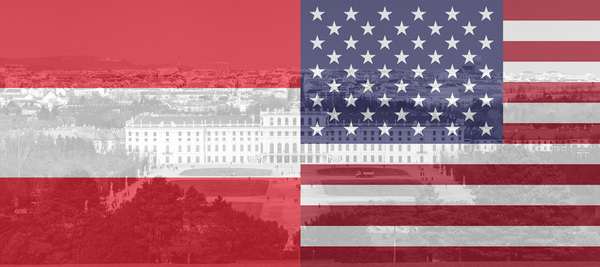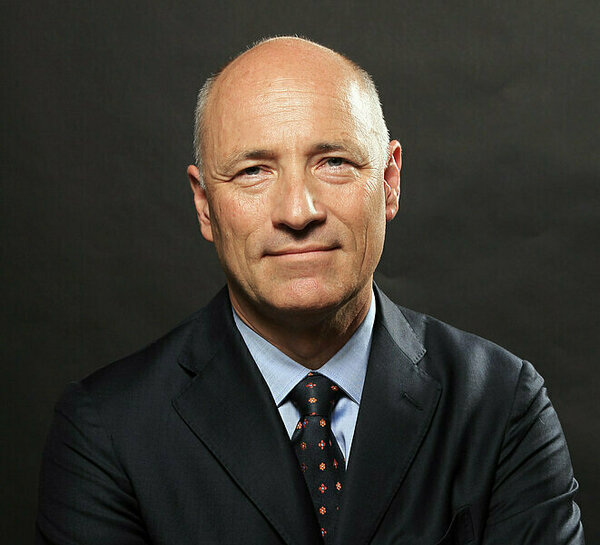
 The flags of Austria and the United States overlay an image of the Schönbrunn Palace in Vienna.
The flags of Austria and the United States overlay an image of the Schönbrunn Palace in Vienna. The Nanovic Institute for European Studies will host a series of events celebrating the centenary of the U.S.-Austrian Peace Treaty of 1921. This symposium, which is supported by the Botstiber Institute for Austrian-American Studies (BIAAS), brings together scholars and experts, including Austrian Ambassador to the United States Martin Weiss, to discuss the treaty’s historical, political, and moral implications. Signed in the wake of World War I, the treaty established and described the relationship between the Republic of Austria and the U.S., including how the emergent global superpower could partially assist with easing the burden of war reparations owed by this new European republic.
Clemens Sedmak, director of the Nanovic Institute and native of Austria, explains that one important goal of the symposium is to create a “moral biography” of this important inter-state agreement. “We hope to reconstruct the moral aspects of the life of the treaty by exploring aspects such as its genesis, its political footprint, and the revealing question of what was included in the document and what was omitted,” Sedmak explains. “We hope that these events will underline the connection between diplomacy and moral issues and the important links between the United States and Austria.” One important research output will be a collaborative article, informed particularly by the online symposium, that will be submitted for publication in the BIAAS’s Journal of Austrian-American History.
The series will be bookended by two public events. At 10:00 a.m. (ET) on Thursday, August 19, Nicole Phelps, associate professor of history at the University of Vermont, will provide the first keynote for an online symposium. An expert in the area of U.S. diplomatic history and Habsburg Central Europe, Phelps will speak on “The U.S.-Austrian Treaty of 1921 and the Reconfiguration of Euro-American Relations.” Sedmak will open this keynote, and the symposium as a whole, with introductory remarks on the event and the idea of “A Moral Biography of a Text.”
 Ambassador Martin Weiss
Ambassador Martin WeissThen at 4:00 p.m. (ET) on Monday, August 23, Ambassador Weiss will close the celebration with an address on U.S. and Austrian relations on the eve of the peace treaty’s 100th anniversary. Weiss’ address will take place in-person at the Snite Museum of Art at Notre Dame and will be followed by a public reception. Attendees will also have the opportunity to appreciate a special exhibit hosted by the Snite Museum in honor of the event, showcasing artworks from the Austro-Hungarian Empire, created in the years leading up the First World War, through the early years of the First Austrian Republic.
The centenary series will also include presentations from experts on the historical and political aspects of Austrian- and European-American relations in the 20th century who are based in Austria, Ireland and at Notre Dame. These talks, which are part of the online symposium, will begin at 11:15 a.m. (ET) on Thursday, August 19, and are open to faculty and graduate students of the University of Notre Dame. Video portions of the proceedings will be made available to the public following the conclusion of the event.
Those interested in attending any portion of this symposium and celebration are kindly asked to register in advance. For a more detailed schedule and information on how to register for both the public and closed sessions, please visit the event page.
Originally published by at nanovic.nd.edu on August 11, 2021.